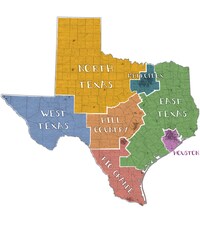
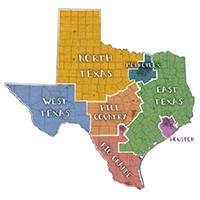
Ninth in a series on swing states
Modern Texas as a swing state? Democrats started to dream it after 2008, when Barack Obama became the first Democratic presidential candidate since Lyndon B. Johnson to carry Texas’s biggest urban counties. Republicans started to warn about it in 2013, when Obama campaign veterans created a group to find and empower hundreds of thousands of non-White Texans who didn’t vote. One year later, Republicans dominated every statewide race — as they had for 20 years — and made inroads with Hispanic voters. “Blue Texas” became a punchline.
Then came Donald Trump. In 2016, after dispatching Sen. Ted Cruz of Texas to win the Republican nomination, Trump defeated Hillary Clinton here by nine points — a smaller margin than any Republican nominee since Bob Dole. It got closer because of Trump’s weakness in the state’s fast-growing cities and suburbs, which optimistic Republicans saw as a fluke. Two years later, Democrats picked up two House seats, sliced away at the GOP’s state legislative majority and came within five points of winning several statewide races, including the one for Cruz’s seat.
“The suburbs are abandoning Donald Trump,” said Julián Castro, a Texan and the former secretary of housing and urban development under Obama who has been raising money and campaigning for down-ballot Democrats since ending his presidential bid. “All the dynamics are coming to fruition to make this a swing state. If Democrats can get lower-propensity voters in the Rio Grande Valley and the big metro areas to turn out, I’m convinced we’d get over the hump.”
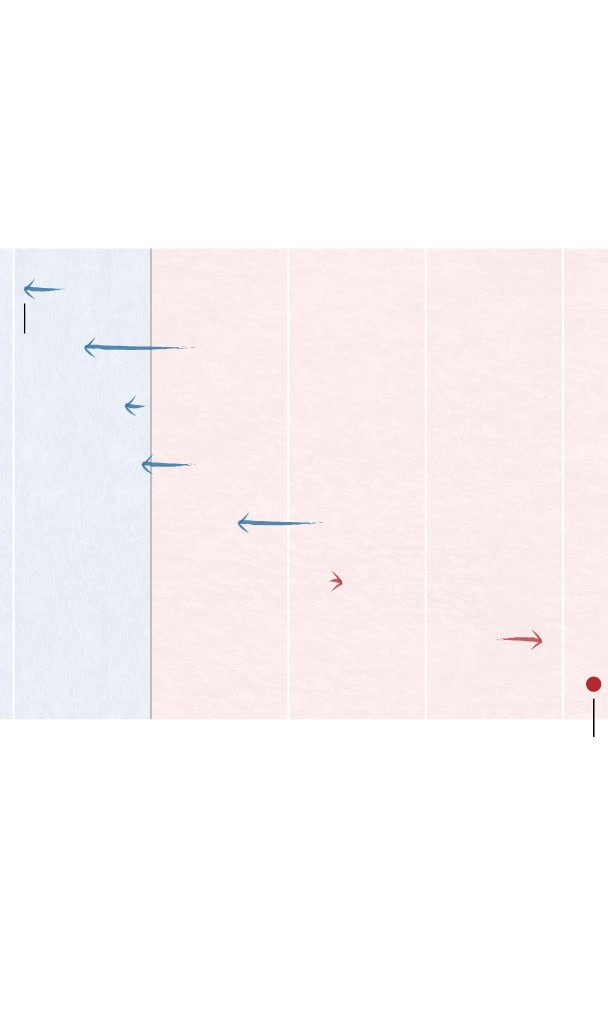
How Texas swung from ‘12 to ’16
Clinton made big gains in cities and suburbs, cutting the GOP’s margin of victory to single digits for the first time in 20 years.
Dem. won by
250K votes
GOP won
by 750K
Rio Grande
Houston
2016
margin
West Texas
Hill Country
Metroplex
North Texas
East Texas
Statewide 2016 margin
In 2018, those trends continued. Republicans held on to their statewide offices, despite further suburban attrition, thanks to high turnout in conservative East and North Texas and middling Democratic turnout with Latino voters in the Rio Grande Valley.
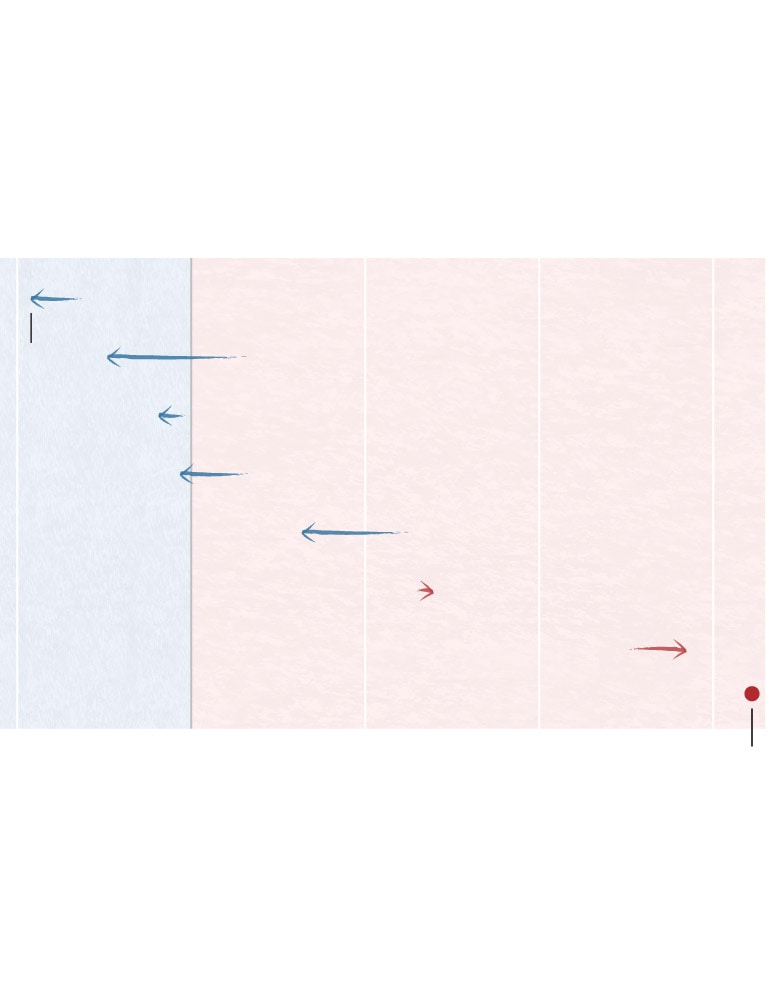
How Texas shifted from 2012 to 2016
Clinton made big gains in cities and suburbs, cutting the GOP’s margin of victory to single digits for the first time in 20 years.
GOP won
by 750K
Dem. won by
250K votes
Rio Grande
Houston
2016
margin
West Texas
Hill Country
Metroplex
North Texas
East Texas
Statewide 2016 margin
In 2018, those trends continued. Republicans held on to their statewide offices, despite further suburban attrition, thanks to high turnout in conservative East and North Texas and middling Democratic turnout with Latino voters in the Rio Grande Valley.
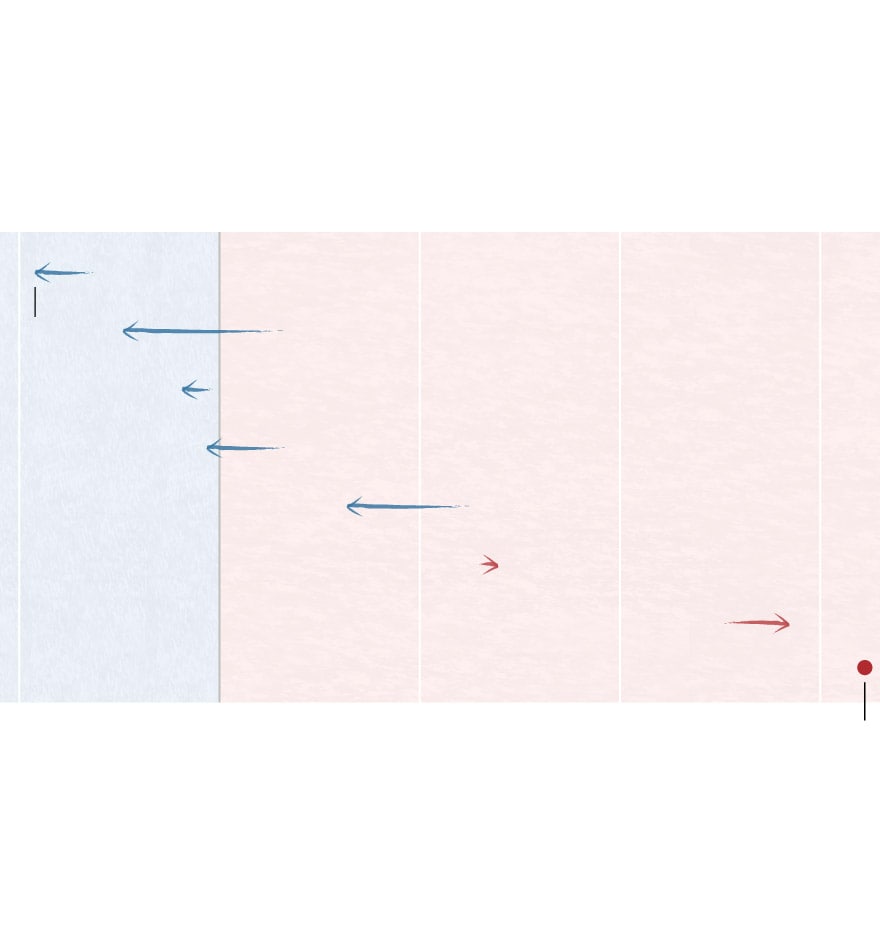
How Texas shifted from 2012 to 2016
Clinton made big gains in cities and suburbs, cutting the GOP’s margin of victory to single digits for the first time in 20 years.
GOP won
by 750K
Dem. won by
250K votes
Rio Grande
Houston
2016
margin
West Texas
Hill Country
Metroplex
North Texas
East Texas
Statewide 2016 margin
In 2018, those trends continued. Republicans held on to their statewide offices, despite further suburban attrition, thanks to high turnout in conservative East and North Texas and middling Democratic turnout with Latino voters in the Rio Grande Valley.
It’s a very big hump. Clinton carried four of Texas’s five most populous counties, containing the cities of Houston, Dallas, Fort Worth, Austin and San Antonio, and where a total of 3,809,602 votes were cast. But 57 percent of the total statewide vote came from outside those counties. Unlike Arizona, where defeat in the suburbs can close off the GOP’s path to a majority, Texas has millions of rural, White, conservative voters who are alienated from the modern Democratic Party and can overwhelm it with high turnout.
Those voters have elected a Republican Party that’s made voting tougher, under pandemic conditions, than in any 2020 swing state. Of the 15 states where Joe Biden’s presidential campaign has run TV ads, only Texas requires voters to have a medical reason to request an absentee ballot, unless they’re 65 or older. Republican state legislators have nixed the state’s old straight-ticket option, after 2018’s Democratic surge led to massive down-ballot wins in urban counties.
And just this week, Republican Gov. Greg Abbott mandated that each of Texas’s 254 counties maintain just one drop box for mail ballots, to “maintain the integrity of our election.” Rural Loving County, with just 169 residents, would have as many drop-off points as Houston’s Harris County, with more than 4.7 million residents. Democrats, who went to court immediately to challenge this, saw it as evidence that Republicans are nervous.
To explain why Texas is being contested at all, we’ve broken it into seven political “states.” Houston and its exurbs have moved away from Republicans in the past few years, adding tens of thousands of Democratic voters as White suburbanites and immigrants turn against the president. West Texas, the least populous of these regions, has become more Democratic, and so has the Rio Grande Valley, which Republicans saw only recently as places where they could pick up votes. A mystery in both regions, to be solved on Election Day, is whether Trump’s support from Hispanic voters has grown or declined since 2016; polling is all over the map.
The Hill Country, a vast region with liberal Austin at the center, has become more competitive as that city’s gotten bluer. So has the Metroplex of Dallas and Fort Worth — still red, but Republicans’ losses in smaller cities are eating away at their margin. The GOP’s strength is in the other two regions, North and East Texas, with some of the most solidly Republican towns in the country. In 2018, they were enough to overwhelm massive Democratic gains in the rest of the state.
This is the ninth in a series breaking down the key swing states of 2020, showing how electoral trends played out over the past few years and where the shift in votes really mattered. See all 50 states here.
Houston
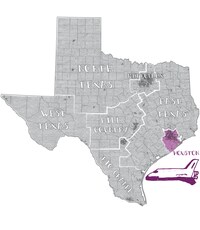
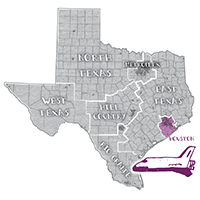
One in 5 Texan voters live here, between Houston itself and the small Gulf Coast towns down Highway 288 and Interstate 45, and their shift away from the GOP has scrambled statewide politics. In 2012, Republican Mitt Romney lost Harris County itself by a handful of votes but won the region overall by 80,000. Four years later, Clinton dominated Harris County, picked up Fort Bend County and built a 120,000-vote cushion here, giving Democrats hope of eventually winning statewide.
Republicans have fought back since then, with mixed success, limiting the Democrats’ 2018 gains but losing a House seat in the Houston “energy corridor” — the place where George H.W. Bush started his political career. Just 29 percent of Harris County residents, and 32 percent of Fort Bend County residents, are non-Hispanic Whites, and in both counties, more than 1 in 4 residents were born outside the United States. Local Democratic candidates such as Sri Preston Kulkarni have made calls and sent voter mail in multiple South Asian languages, and Republicans such as Rep. Dan Crenshaw have worked to recruit more diverse candidates, like Black congressional challenger and former Apache pilot Wesley Hunt.
2016 vote totals
- Donald Trump: 809,817
- Hillary Clinton: 930,013
Counties included: Brazoria, Fort Bend, Galveston, Harris
West Texas
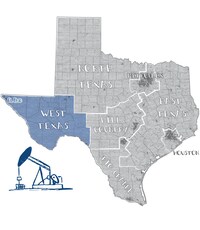
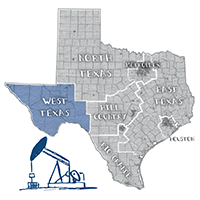
Before Beto O’Rourke broke records for Democratic fundraising in Texas — and before an ill-advised campaign for president — he was viewed skeptically as a statewide candidate because he came from El Paso. Thinly populated West Texas had never been a launchpad for Texas politicians, and while oil exploration in the Permian Basin was a steady source of jobs, there was none of the fast, diverse population growth that was reshaping such places as Houston and Dallas.
Still, Republican losses here can hurt them statewide. Romney held Obama to a victory of fewer than 9,000 votes here; Clinton won by 66,000 votes, helped by record-breaking turnout in El Paso County, and she won in smaller cities such as Midland. O’Rourke improved on those numbers, but even another broken record in 2020 would net Democrats fewer votes than they’ll get out of the Houston area.
2016 vote totals
- Donald Trump: 138,729
- Hillary Clinton: 185,185
Counties included: Brewster, Crane, Crockett, Culberson, Ector, El Paso, Hudspeth, Jeff Davis, Loving, Midland, Pecos, Presidio, Reeves, Terrell, Upton, Val Verde, Ward, Winkler
Hill Country
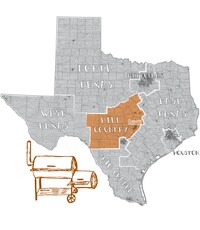
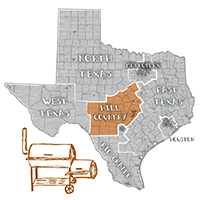
Settled by German immigrants, and loyal for decades to the old Republican Party, this region is increasingly defined by the explosive growth of Austin. That’s been a boon to Democrats. More than half of all votes here come from Austin’s Travis County and neighboring Williamson County, and while Republicans wrote off Travis years ago, the combined Democrat margin in that area rose from 60,000 in 2012 to 160,000 votes in 2016.
The rest of Hill Country is redder, though seven of its more rural counties shifted to the left slightly in 2016. That’s been a problem for Republicans: They drew legislative maps in 2011 that sliced up Austin into several districts, on the assumption that the exurbs would stay red. Even if the presidential campaigns don’t invest much here, the races in the 10th, 21st and 25th districts could drive up turnout.
2016 vote totals
- Donald Trump: 501,788
- Hillary Clinton: 517,428
Counties included: Bandera, Bell, Blanco, Bosque, Burnet, Comal, Coryell, Edwards, Gillespie, Hamilton, Hays, Kendall, Kerr, Kimble, Kinney, Lampasas, Llano, Mason, McCulloch, Medina, Menard, Mills, Real, San Saba, Schleicher, Sutton, Travis, Uvalde, Williamson
Rio Grande Valley
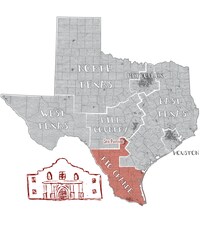
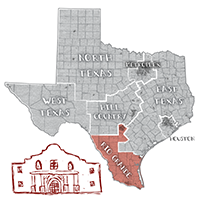
Tejano Texas, settled by Mexicans who lost many of their rights when the state joined the union, had its political power limited for decades by a poll tax, for years set at $1.75. In the 1940s, Democrats organized in the area to pay potential voters’ fees, and the region from San Antonio’s Bexar County to the U.S.-Mexico border has ever since been the part of Texas most resistant to Republicans. Even George W. Bush lost it during his two runs for president, and in 2016, Clinton won it with the biggest margins of any Democratic nominee in 20 years.
Republicans never stopped competing here, though, flipping a state Senate seat in a 2018 special election and narrowly holding the 23rd Congressional District, which is open this year after the retirement of Rep. Will Hurd. The areas around the region’s military bases are strongly Republican, and the multiyear Democratic project to find more votes here has been complicated by Republicans’ own outreach to socially conservative Hispanic voters. But Republicans such as Abbott and Cruz have had more luck with that than Trump.
2016 vote totals
- Donald Trump: 415,168
- Hillary Clinton: 645,306
Counties included: Atascosa, Bexar, Brooks, Cameron, Dimmit, Duval, Frio, Hidalgo, Jim Hogg, Jim Wells, Kenedy, Kleberg, La Salle, Maverick, Nueces, Starr, Webb, Willacy, Zapata, Zavala
Metroplex
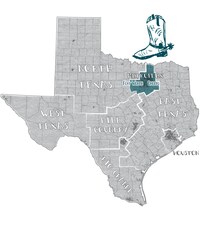
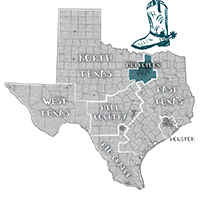
Dallas has been a Democratic stronghold for decades. Fort Worth has been one of the most Republican-friendly large cities in America. The suburbs and exurbs of both, which have doubled in size since 2000, padded the GOP’s numbers, putting Texas far out of Democrats’ reach. But that’s begun to change, with cities like Plano and Denton turning blue and Democratic landslides in the core Metroplex wiping out Republican state legislators.
The clash between the country club GOP and the Trump-era GOP — epitomized when arch-conservative Allen West became state GOP chairman — is vivid here. Katrina Pierson, the lead of the Trump campaign’s Black outreach, got her start with an unsuccessful 2014 primary run against a Metroplex congressman in a then-safe seat. Four years later, Republican Rep. Pete Sessions was defeated in a general election, and Democrats are trying to stretch their map in the region to flip the state legislature. O’Rourke fought Cruz to a draw here, but where the suburban growth stops, Republicans remain dominant.
2016 vote totals
- Donald Trump: 1,230,220
- Hillary Clinton: 1,070,816
Counties included: Collin, Dallas, Denton, Ellis, Grayson, Hood, Johnson, Kaufman, Parker, Rockwall, Tarrant
North Texas
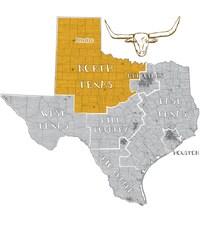
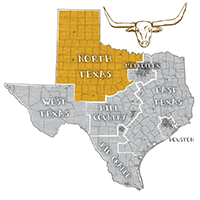
The president has lost traditional Republican support in much of Texas, but not in the massive region north and west of Dallas. The 13th Congressional District, the single most Republican-friendly seat in the country, will send the president’s former physician to Congress in November, after Trump’s support for Ronny L. Jackson powered him through a primary against Republicans with stronger local ties. Since 2000, no Democratic nominee for president has won a single county here; in 2016, Clinton couldn’t reach even 30 percent support in any of them.
There could be more Republican votes to win here, though this is the only part of Texas where most counties have been losing population. The area around Amarillo has been growing, albeit slower than most Texas cities, and Democrats added votes there in 2016 and 2018. But in a presidential year, even a weak Republican campaign should come out of here with a margin of 300,000 votes, as nothing is trending toward Democrats.
2016 vote totals
- Donald Trump: 464,204
- Hillary Clinton: 116,611
Counties included: Andrews, Archer, Armstrong, Bailey, Baylor, Borden, Briscoe, Brown, Callahan, Carson, Castro, Childress, Clay, Cochran, Coke, Coleman, Collingsworth, Comanche, Concho, Cooke, Cottle, Crosby, Dallam, Dawson, Deaf Smith, Dickens, Donley, Eastland, Erath, Fisher, Floyd, Foard, Gaines, Garza, Glasscock, Gray, Hale, Hall, Hansford, Hardeman, Hartley, Haskell, Hemphill, Hockley, Howard, Hutchinson, Irion, Jack, Jones, Kent, King, Knox, Lamb, Lipscomb, Lubbock, Lynn, Martin, Mitchell, Montague, Moore, Motley, Nolan, Ochiltree, Oldham, Palo Pinto, Parmer, Potter, Randall, Reagan, Roberts, Runnels, Scurry, Shackelford, Sherman, Somervell, Stephens, Sterling, Stonewall, Swisher, Taylor, Terry, Throckmorton, Tom Green, Wheeler, Wichita, Wilbarger, Wise, Yoakum, Young
East Texas
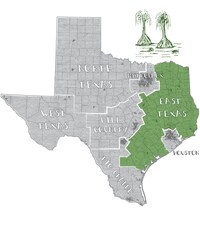
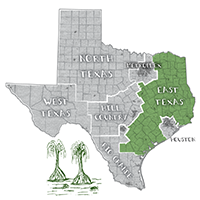
For most of the 20th century, when Democrats dominated Texas, their majorities came from the Rio Grande Valley and the 83 counties here — wetter and more traditionally “Southern” than the rest of the state. That began to change after the passage of the Voting Rights Act and the Democratic Party’s shift to the left. In 1968, George Wallace’s independent campaign carried 17 counties, and starting in 1994, when George W. Bush was elected governor, the region became a Republican bulwark.
It still is, and like much of the socially conservative White parts of the South, it has continued to trend toward Republicans even in weaker years for the party. Clinton improved on Obama’s numbers in the cities of Tyler and Nacogdoches, but the rest of the region shifted right, with Trump running nearly 150,000 votes ahead of Romney. That gave him a nearly 3-to-1 margin here, and did the same for Cruz, proving that Republican supermajorities in the most conservative parts of Texas can make up for massive losses in the cities.
2016 vote totals
- Donald Trump: 1,124,261
- Hillary Clinton: 413,148
Counties included: Anderson, Angelina, Aransas, Austin, Bastrop, Bee, Bowie, Brazos, Burleson, Caldwell, Calhoun, Camp, Cass, Chambers, Cherokee, Colorado, Delta, DeWitt, Falls, Fannin, Fayette, Franklin, Freestone, Goliad, Gonzales, Gregg, Grimes, Guadalupe, Hardin, Harrison, Henderson, Hill, Hopkins, Houston, Hunt, Jackson, Jasper, Jefferson, Karnes, Lamar, Lavaca, Lee, Leon, Liberty, Limestone, Live Oak, Madison, Marion, Matagorda, McLennan, McMullen, Milam, Montgomery, Morris, Nacogdoches, Navarro, Newton, Orange, Panola, Polk, Rains, Red River, Refugio, Robertson, Rusk, Sabine, San Augustine, San Jacinto, San Patricio, Shelby, Smith, Titus, Trinity, Tyler, Upshur, Van Zandt, Victoria, Walker, Waller, Washington, Wharton, Wilson, Wood


